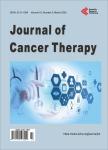A Comparison of Breast Surgeon and Nomogram-Generated Risk Predictions of Sentinel and Non-Sentinel Node Metastases
A Comparison of Breast Surgeon and Nomogram-Generated Risk Predictions of Sentinel and Non-Sentinel Node Metastases作者机构:Breast Service Department of Surgery Memorial Sloan-Kettering Cancer Center New York USA Department of Epidemiology and Biostatistics Memorial Sloan-KetteringCancer Center New York USA Hospital Sirio-Libanes Sao Paulo Brazil
出 版 物:《Journal of Cancer Therapy》 (癌症治疗(英文))
年 卷 期:2013年第4卷第7期
页 面:1-6页
学科分类:1002[医学-临床医学] 100214[医学-肿瘤学] 10[医学]
主 题:Sentinel Lymph Node Biopsy Nomogram Predictions Breast Cancer Completion Axillary Lymph Node Dissection
摘 要:Memorial Sloan-Kettering Cancer Center (MSKCC) has developed 2 nomograms: the Sentinel Lymph Node Nomogram (SLNN), which is used to predict the likelihood of sentinel lymph node (SLN) metastases in patients with invasive breast cancer, and the Non-Sentinel Lymph Node Nomogram (NSLNN), which is used to predict the likelihood of residual axillary disease after a positive SLN biopsy. Our purpose was to compare the accuracy of MSKCC nomogram predictions with those made by breast surgeons. Two questionnaires were built with characteristics of two sets of 33 randomly selected patients from the MSKCC Sentinel Node Database. The first included only patients with invasive breast cancer, and the second included only patients with invasive breast cancer and positive SLN biopsy. 26 randomly selected Brazilian breast surgeons were asked about the probability of each patient in the first set having SLN metastases and each patient in the second set having additional non-SLN metastases. The predictions of the nomograms and breast surgeons were compared. There was no correlation between nomogram risk predictions and breast surgeon risk prediction estimates for either the SLNN or the NSLNN. The area under the receiver operating characteristics curves (AUCs) were 0.871 and 0.657 for SLNN and breast surgeons, respectively (p 0.0001), and 0.889 and 0.575 for the NSLNN and breast surgeons, respectively (p 0.0001). The nomograms were significantly more accurate as prediction tools than the risk predictions of breast surgeons in Brazil. This study demonstrates the potential utility of both nomograms in the decision-making process for patients with invasive breast cancer.



